'Driver, How Much Fuel Do We Have?' – An Update
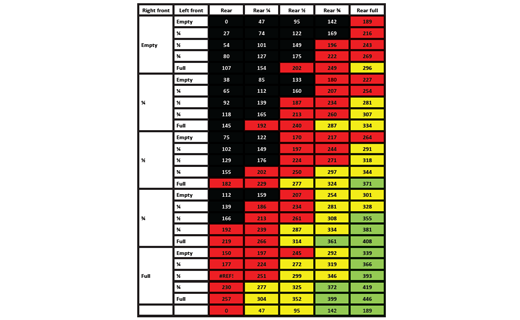
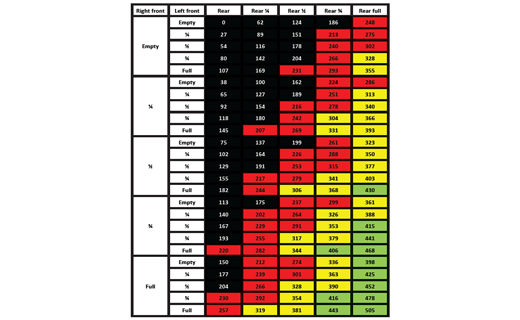
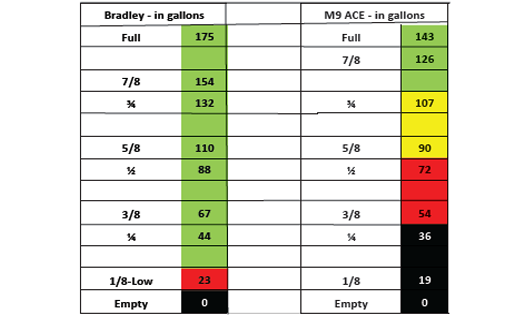
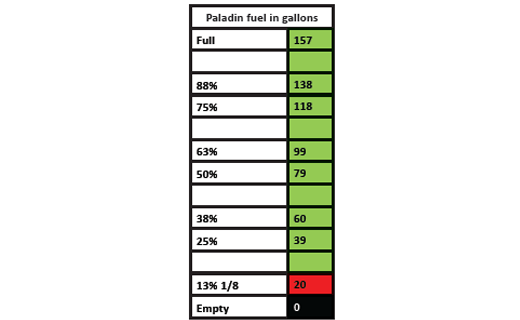
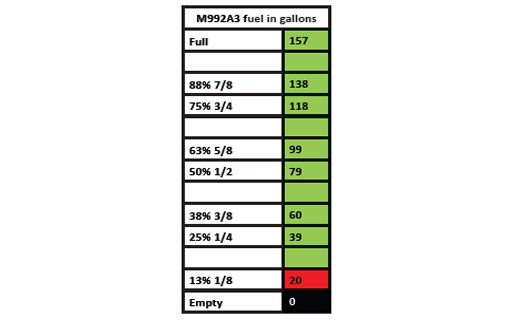
An updated and easy way to report accurately.
In the September-October 1996 issue of ARMOR, then-SSG Steve Krivitsky1 published a simplified way to determine how many gallons of fuel remained in an M1A1 based on each fuel-cell level (left front, right front and rear).
With the M1 family of vehicles almost completely converted to a “pure-fleet” M1A2 and its smaller-capacity fuel cell, Krivitsky’s article needs updating based upon the current M1A2 tank fleet. While Krivitsky’s article focused exclusively on the M1A1 tank, this update also includes the other armored brigade combat team (ABCT) primary vehicles: the M2A3 Bradley, M1 Assault Breacher Vehicle (ABV), M9 Armored Combat Earthmover (ACE), M109A6 Paladin and M992 Field Artillery Ammunition Supply Vehicle (FAASV). This update provides an easy method for individual vehicle commanders to report on-hand fuel, and then for others at battalion and BCT level to accurately forecast how much fuel is required to top off their units.
Fuel is forecast, ordered and distributed by gallons, not by color status (black/red/amber/green). If a company executive officer reports Company B is amber on Class III, that can mean anywhere from 60 percent to 80 percent on hand. If the unit is closer to 60 percent on hand, B Company might not get enough fuel for the next mission; or, if closer to the 80 percent mark, the company may receive too much fuel. Accurate fuel projections are needed to ensure that neither time nor fuel is wasted, and this update provides a method to ensure accuracy.
To read the chart for the M1A2 (Figure 1), the tank commander asks the driver to read the fuel levels in each of the fuel cells and then cross-references the levels to get the total number of gallons. For example, right front is half-full, left front is 3/4 full, rear is half-full, so that equals 250 remaining gallons.
The reading is similar for the ABV chart (Figure 2). (The ABV is built on an M1A1 chassis.)
For the M2 Bradley (Figure 3), the level line slowly drops as fuel is expended and stays in the green area until it reaches 1/8 remaining, or 23 gallons. As the level drops, the brigade commander can then report the amount of fuel remaining, and his executive officer can plan accordingly.
The M9 ACE fuel gauge reads much like a car, and the corresponding gallons are listed in Figure 3.
The Paladin (Figure 4) and FAASV (Figure 5) are similarly listed.
Again, the objective is to transmit the correct on-hand amount of fuel, by platoon, to the company executive officer or command post. With this information, a company roll-up amount of fuel on hand can be sent through appropriate channels to the brigade support battalion’s (BSB) support operations officer. The BSB will then determine how much fuel is required and how it will be transported to the maneuver and supported battalions.
Notes
1Krivitsky is now branch chief, weapons and gunnery doctrine, MCoE, Fort Benning.
 email
email print
print